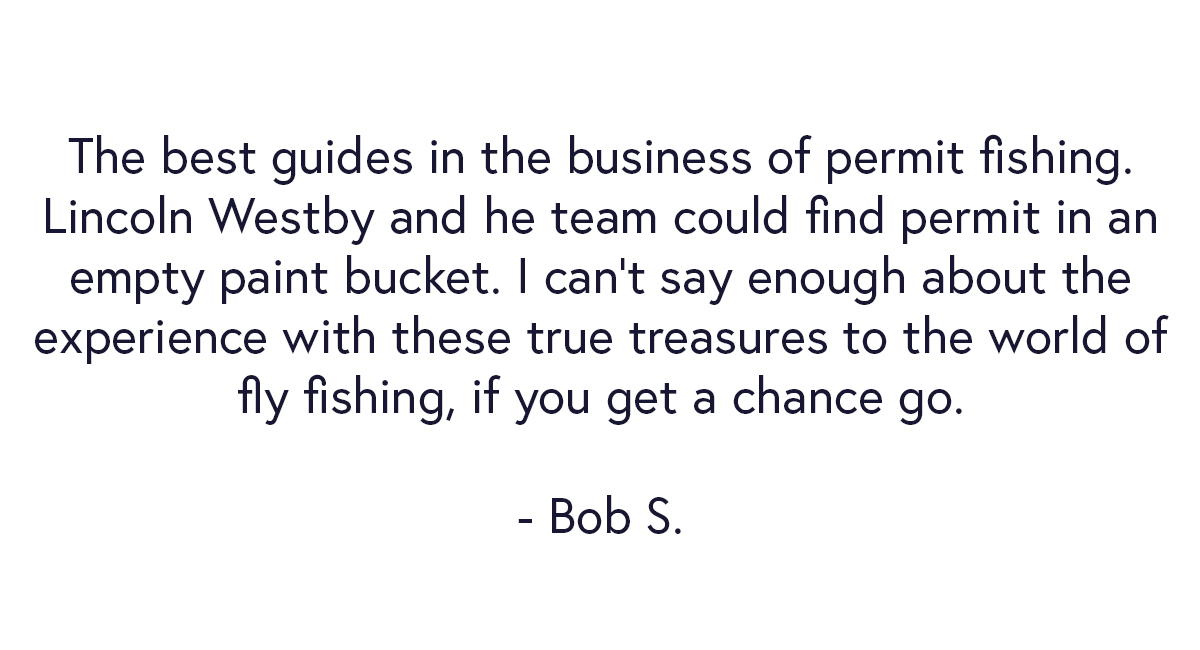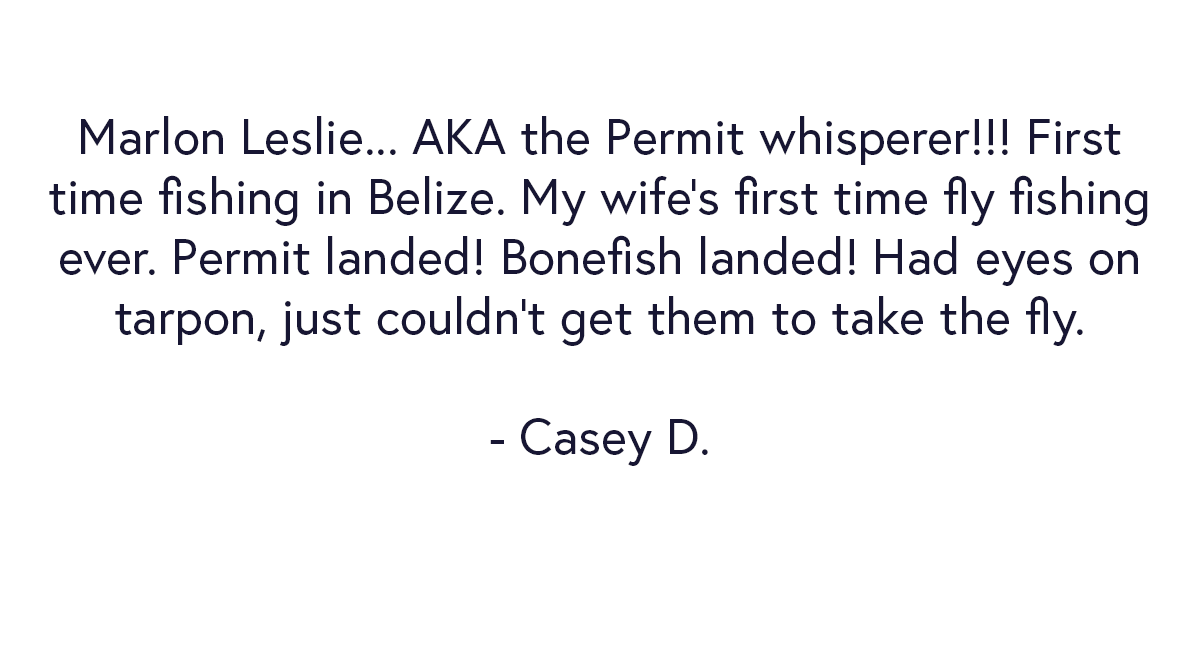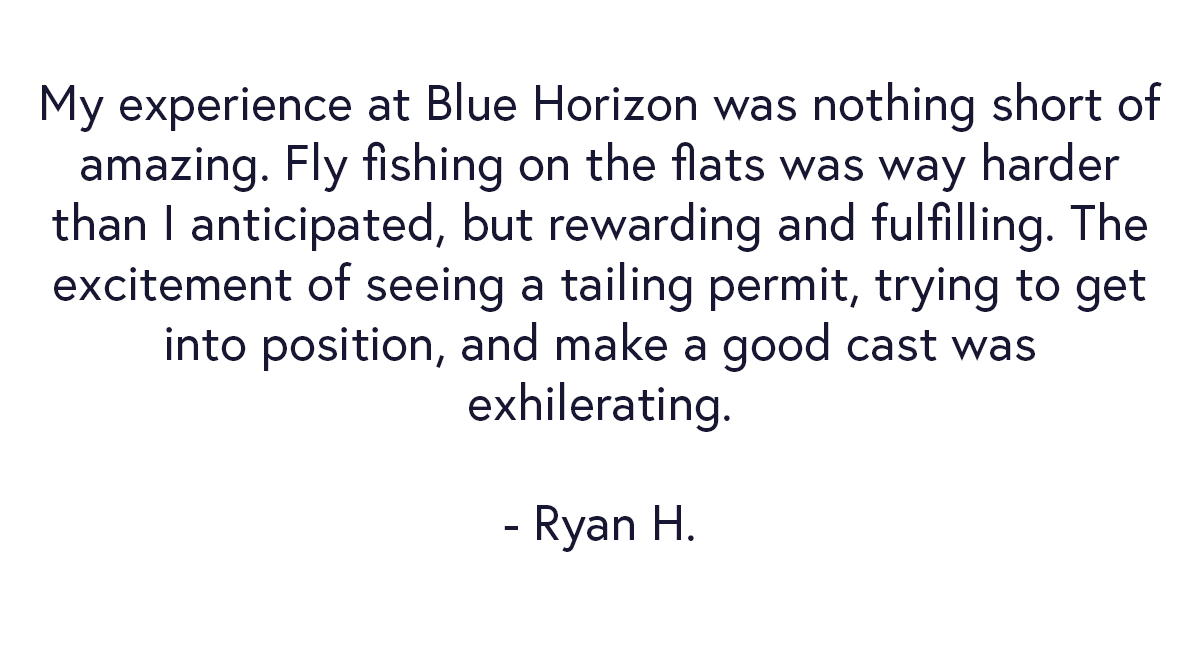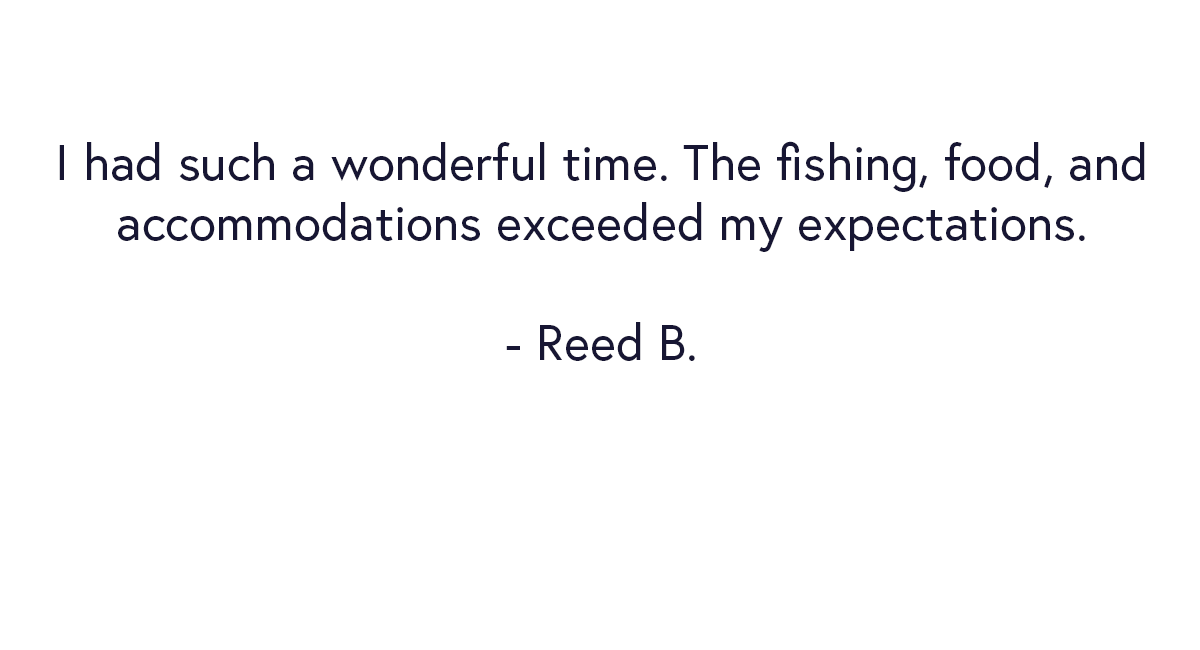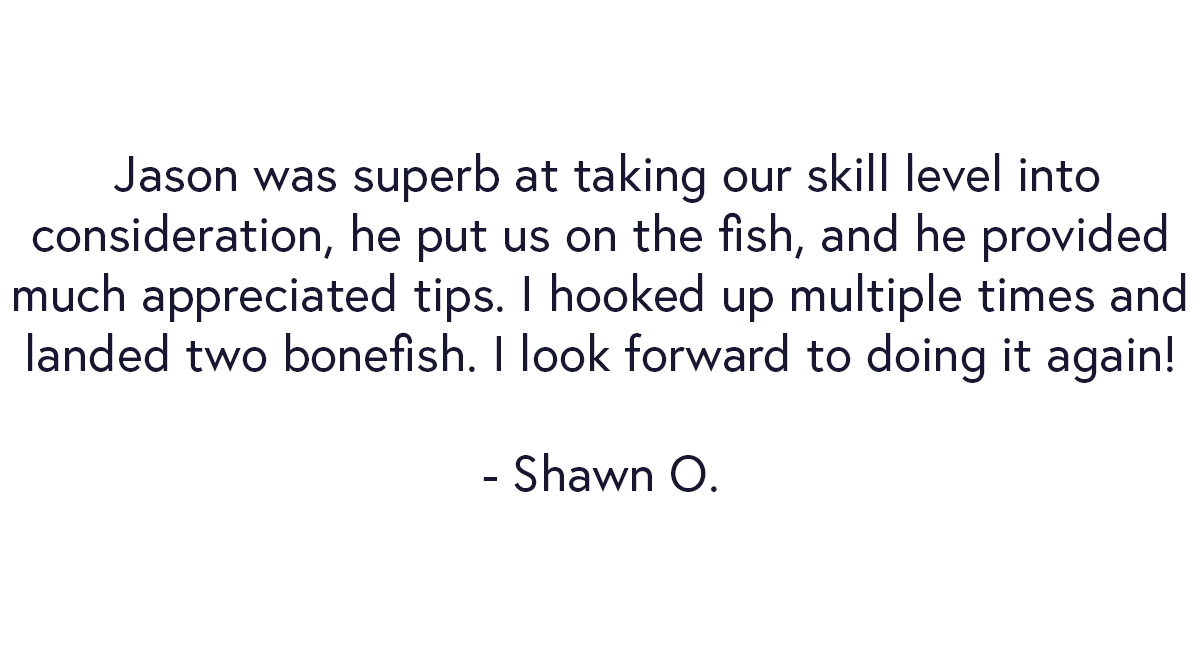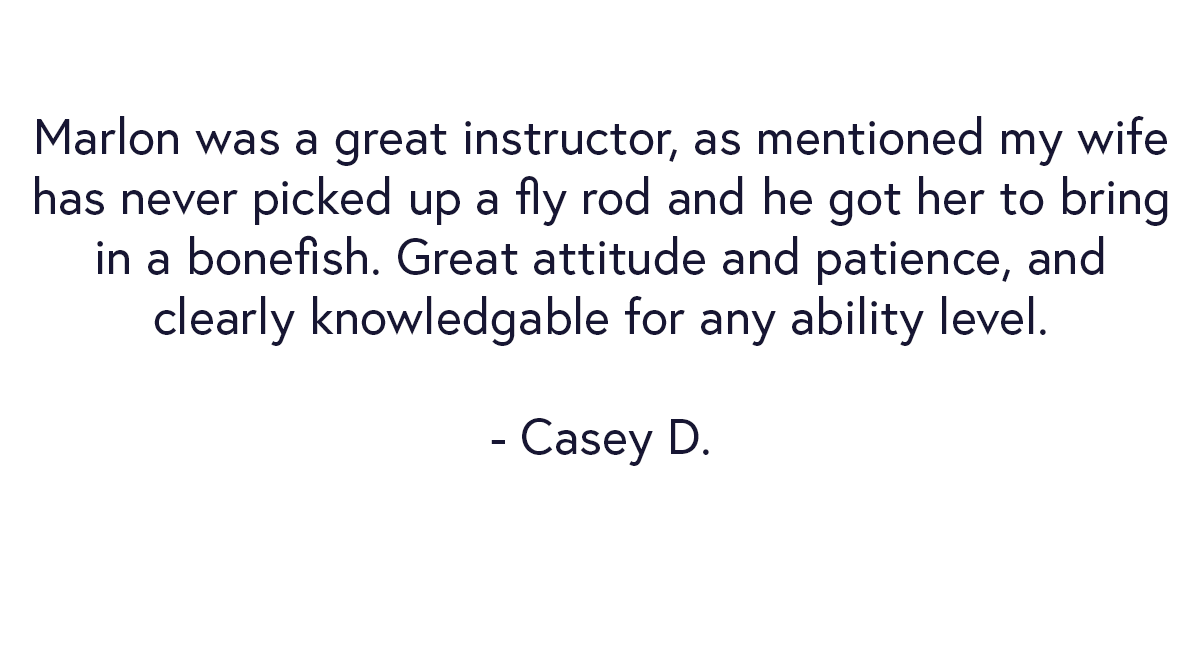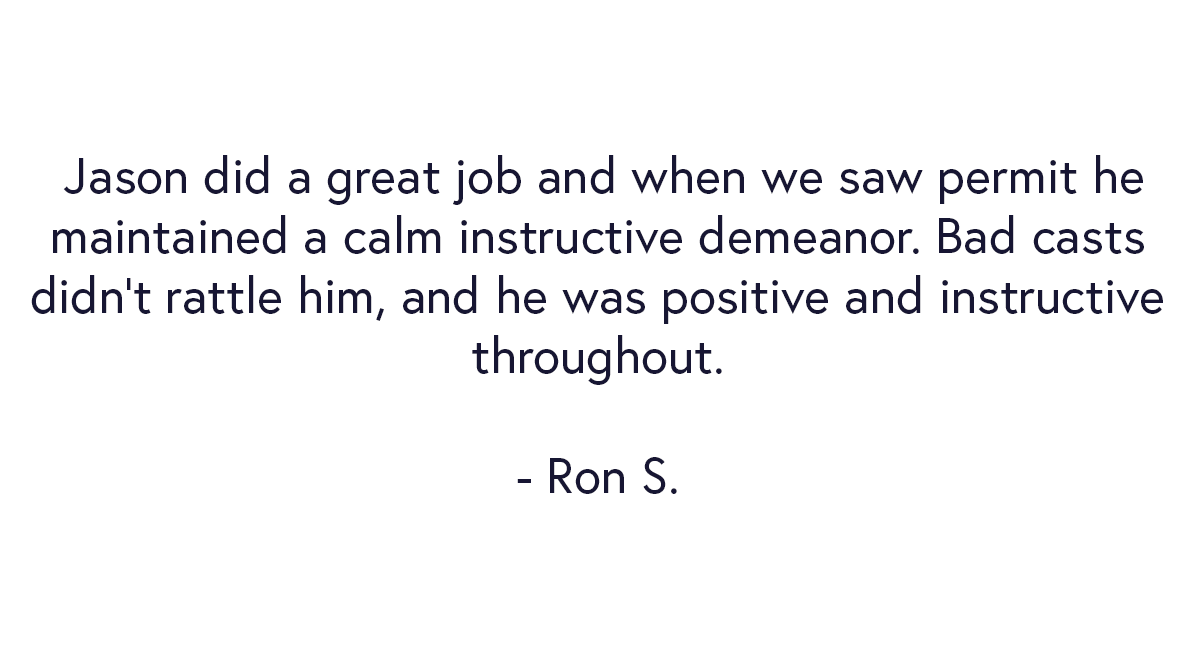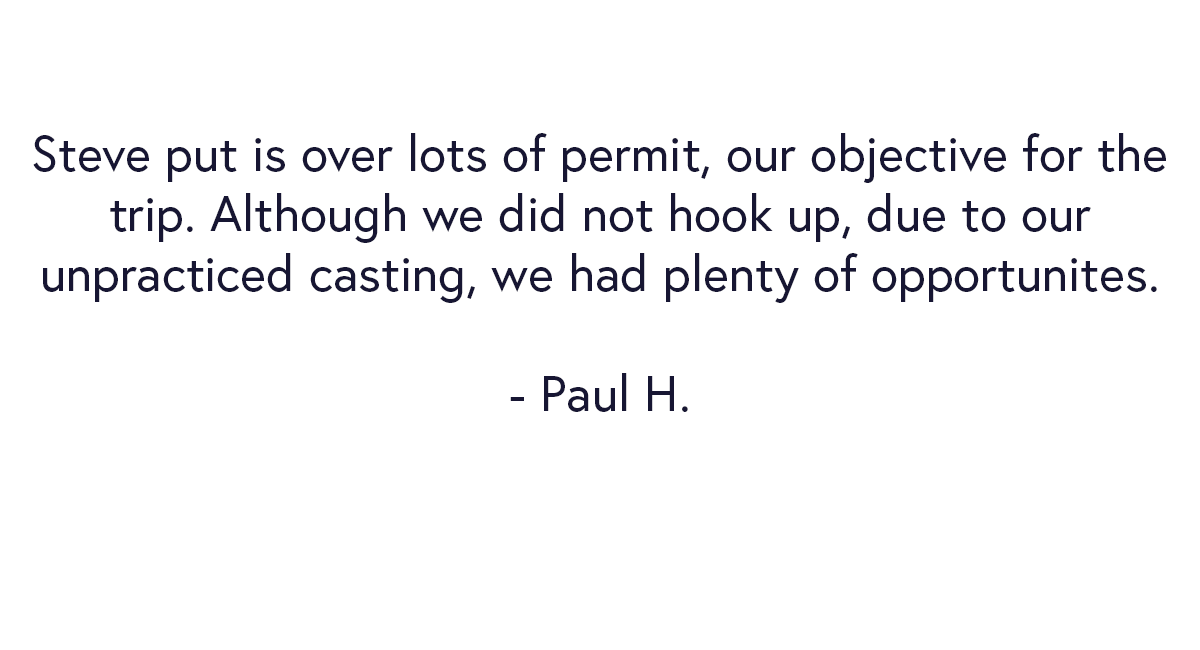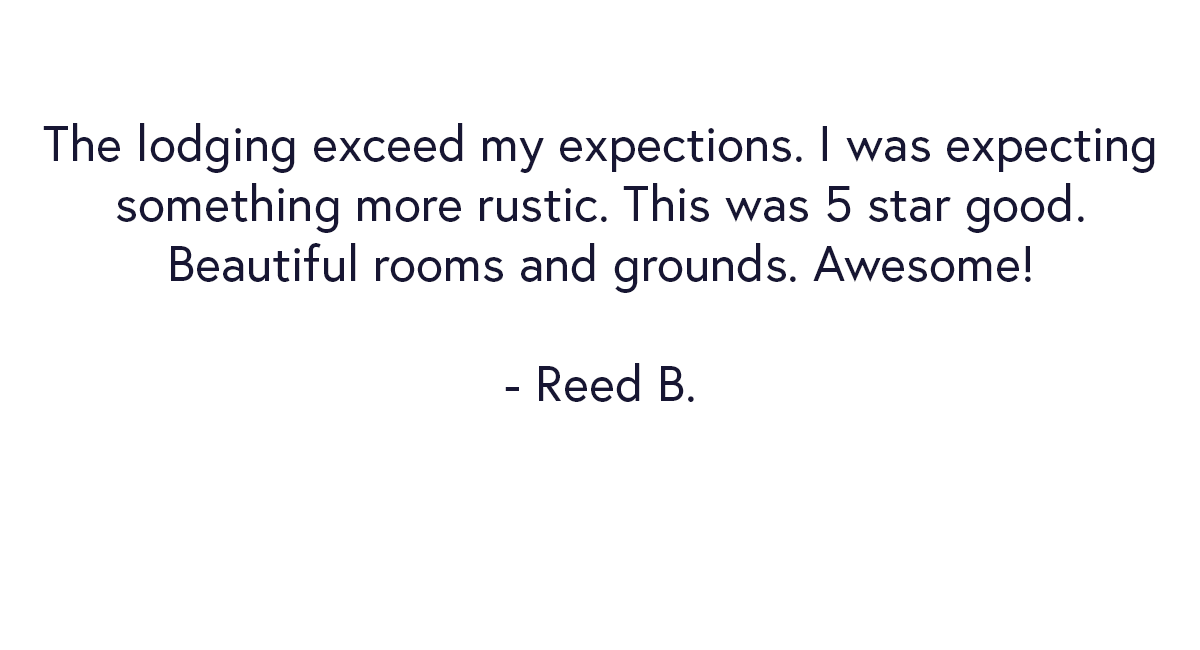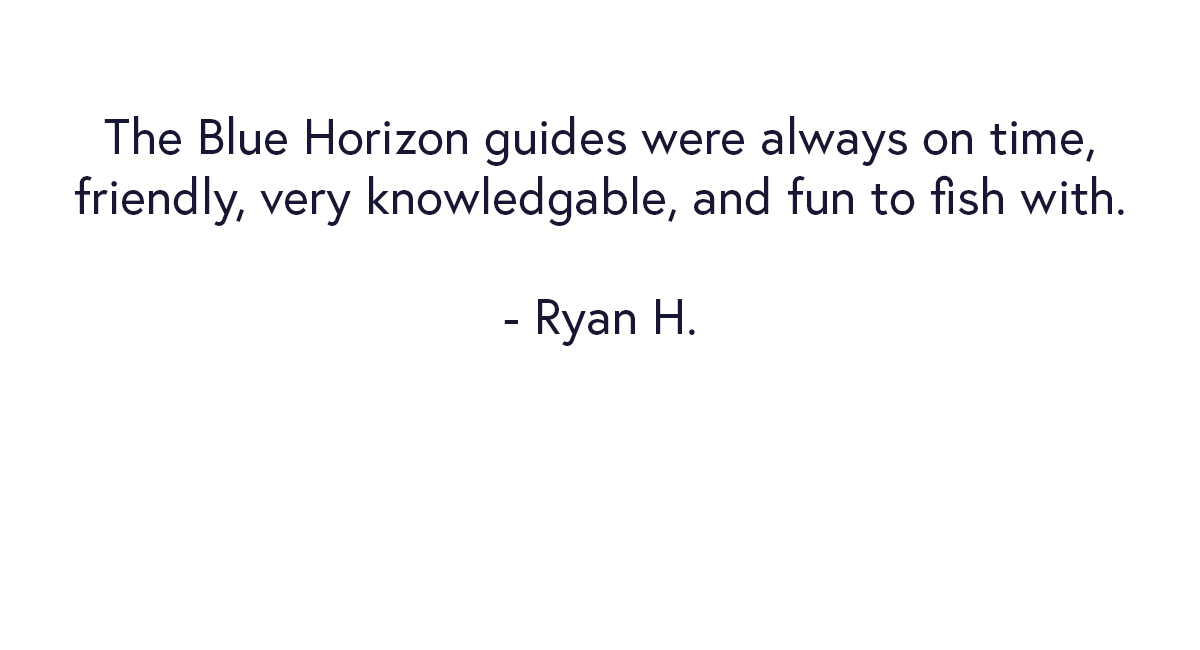Fly Fishing for Permit in Belize: 6 Essential Tips
Fly fishing for permit is often considered the ultimate challenge in saltwater angling. These intelligent and wary fish demand precision, patience, and a keen understanding of their behavior. For anglers heading to the beautiful flats of Belize in pursuit of this prized species, mastering a few key techniques can significantly increase your chances of success. At Blue Horizon Belize, our experienced guides have witnessed firsthand what it takes to hook and land a permit on the fly. Here are six essential tips to help you achieve your goal.
1. Spotting Permit: The Art of the Hunt
When fly fishing for permit, a crucial first step is mastering the art of spotting permit in their natural habitat. This is often referred to as "hunting." Begin by expanding your field of vision, avoiding focus on any single point. Instead, systematically scan the horizon for "tailing" permit (easiest way to identify these fish) or look beneath the water's surface for "cruising" fish. A helpful technique is to look for interruptions in the natural patterns of the coral or turtle grass bottom or a break in the pattern of the water's surface – these "breaks" in the ocean's rhythm can signal a permit or school of permit. If something catches your eye, quickly focus in that direction to identify the source. The initial sighting of both tailing and cruising permit can be subtle. Try scanning from left to right (or right to left), starting close to the boat and gradually extending your gaze further. Repeat this process methodically.
PRO TIP: Polarized glasses are indispensable for this, so we'll assume you have a good pair. While wearing them, try slightly tilting your head from side to side, at an diagonal. This shift can enhance the polarization effect and improve underwater visibility, especially during the lower light conditions of early morning and late afternoon/evening.
2. Never Lose Sight: Tracking Permit in the Flats
Once you successfully spot a permit that is tailing or swimming, resist the urge to look away. These fish possess an almost ghostly ability to disappear. One moment they might be clearly visible, and the next, with a swift kick of their tail or a subtle shift of their body, they are gone. If you lose sight of the fish, use your best judgment to anticipate its movement. Consider its swimming speed and direction, and focus your search on where you believe it might have gone. If you observed it swimming in a specific direction at a certain pace, look further out along that path. Often, they will reappear right where you anticipated them to be.
3. Accuracy Over Distance: Effective Casting for Permit
Many anglers believe that catching a permit on the fly requires exceptionally long casts, often thinking they need to reach distances of 70-80 feet or more. However, the reality is that precise fly placement is far more critical than casting distance. Accuracy is the name of the game, and the most successful anglers in fly fishing for permit can deliver their fly with pinpoint precision. You might be surprised at how close to you or the boat these fish will swim, particularly when they are focused on feeding. If you can consistently cast within a 40-50 foot range with accuracy, your likelihood of landing a permit in Belize significantly increases.
Knowing precisely where to cast your fly is key. You need to present the fly close enough for the permit to see it, but not so close that the impact of the fly landing spooks the fish. Often, anglers cast too far away, fearing they will scare the fish. However, a fly cast too far is unlikely to be seen by the fish. The adage "Spook 'em or Catch 'em" holds true. Don't be afraid to cast closer to the permit than your initial instinct suggests. It's generally better to err on the side of casting slightly too close than too far away.
PRO TIP: If the permit is moving quickly, you'll need to cast further ahead of its current position, anticipating where it swimming to, in order to allow the fly enough time to sink – sometimes as much as 10 feet. Conversely, if the fish is tailing and actively feeding, casting a few inches from its face can often be the most effective approach. Trust your instincts to determine the best presentation.
4. Imitate the Prey: Fly Stripping Techniques for Permit
Another common mistake anglers make when fly fishing for permit is stripping the fly too fast, too aggressively, and with too much movement. Our guide team has seen the catch rate of any of our guest improved dramatically once they are able focused on minimizing fly movement (at least while fishing with a grab pattern). Concentrate on keeping the slack out of your line so that any movement of the fly is subtle. More importantly, ensure there is no slack in the line, allows you to feel even the slightest take or if your fly is dragging on the bottom. This subtle approach is particularly effective when using a crab pattern, as crabs typically flee briefly and then try to hide from predators. If you are using a shrimp pattern, a slightly faster retrieve with a series of short, rapid strips often works best.
PRO TIP: Engage with the fish's behavior. Once you see a permit turn its attention to your fly, adjust your stripping action to mimic the natural movement of the fly you are presenting. For a crab pattern, be sure to incorporate pauses in your strip, allowing the fly to sink, imitating a crab fleeing and then seeking cover. When a permit shows interest in your shrimp pattern, you might increase the speed of your strip to simulate a shrimp panicking and trying to evade a predator. Be responsive to the fish's actions. If a permit chases your fly and then stops, experiment with increasing, decreasing, or even stopping your retrieve momentarily. Sometimes, a fish will inspect the fly multiple times before either eating it or rejecting it.
5. The Strip Set: Hooking Permit the Right Way
When a permit eats your fly, remember this crucial rule: NEVER EVER EVER trout set (lifting the rod tip sharply and quickly). Instead, keep the tip of your rod pointed towards the fish and continue stripping the line at the same pace you were using to entice the strike. If the fish eats aggressively and turns quickly, you can release the line to avoid a break-off, as they often hook themselves in this scenario. Sometimes, a permit will eat the fly, but continue swimming towards you. In this situation, it's vital to keep stripping to maintain tension on the line; otherwise, the fish will likely spit the fly before you can achieve a solid hook set. A trout set, lifting the rod tip too early, will almost always result in pulling the fly out of the permit's mouth. By focusing on keeping the rod tip down and maintaining your retrieve until you feel the line pulling firmly from your fingers, you will significantly increase your chances of landing that fish. Once you feel the solid pull, then you can lift the rod tip and fight the fish as you would any other.
6. Breath: Staying Calm When Targeting Permit
Perhaps the most important piece of advice when fly fishing for permit is to control your emotions. These fish have a way of getting anglers incredibly worked up. However, the surge of adrenaline, dopamine, and cortisol can actually work to your disadvantage. Deep, slow breathing is the most effective way to maintain your composure. Inhale deeply to a count of 4 or 5, and exhale slowly to a count of 5 or 6, consciously focusing on relaxing your body as you exhale. Remember, it's just a fish! You've likely caught hundreds of fish before, and by keeping your heart rate steady, you'll make better, more accurate casts, and that permit is far more likely to inhale your fly as soon as it sees your fly!
Successfully fly fishing for permit in Belize is a rewarding experience that tests your skills and patience. By focusing on these six key tips – mastering the art of spotting, maintaining visual contact, prioritizing casting accuracy, employing effective stripping techniques, executing the strip set, and staying calm – you'll significantly enhance your chances of landing one of these magnificent fish during your next trip with Blue Horizon Belize. We look forward to helping you achieve your permit fishing dreams on the beautiful Belizean flats!
For more information about fishing with the team at Blue Horizon Lodge, you can email or call 800-313-1672


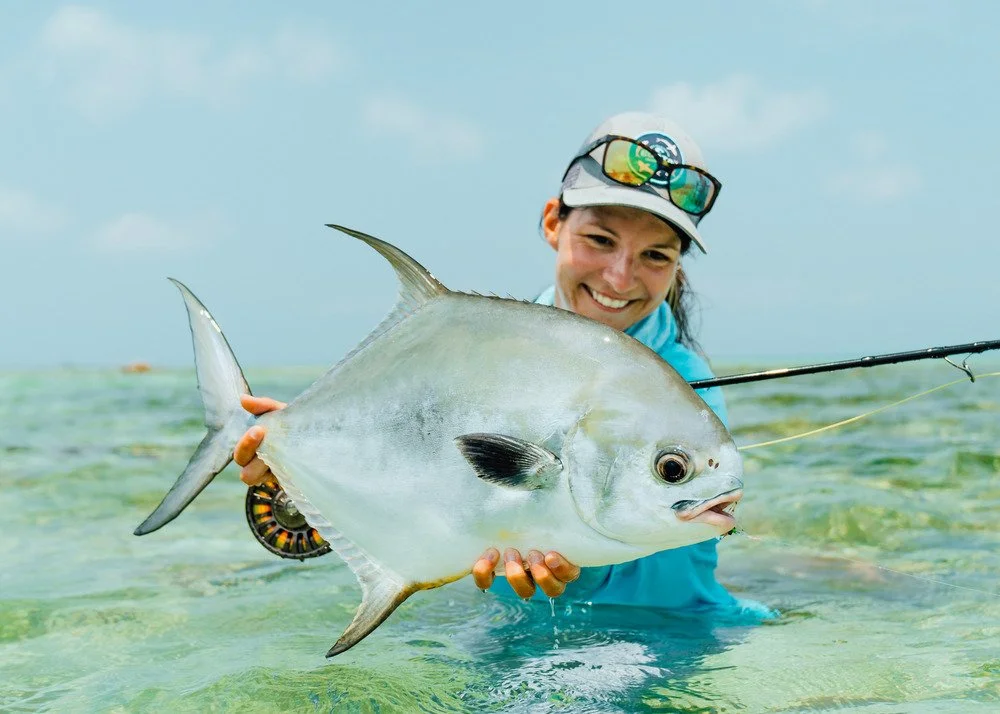



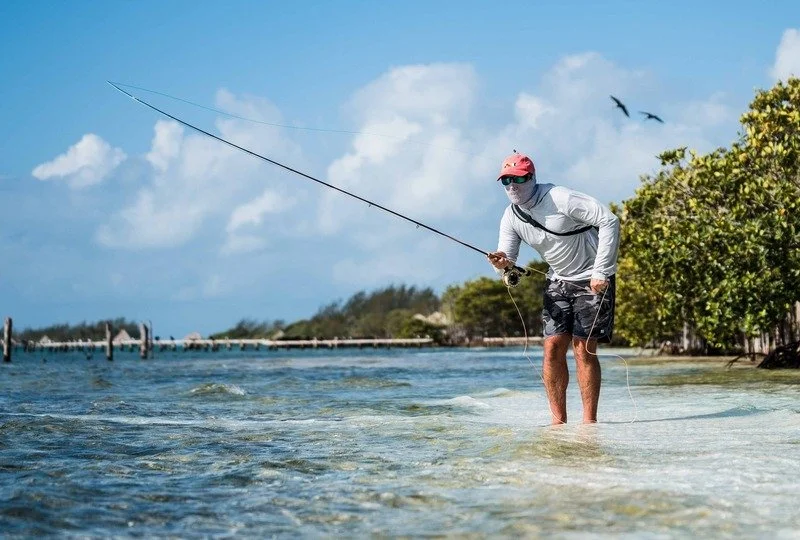



![Big news today, Belize’s International Airport (BZE) will reopen on August 15th, 2020. The guides and the rest of the team at @bluehorizonbelize are beyond thrilled to get back on the water. [LINK IN BIO] for more information.
~
~
800.313.1672](https://images.squarespace-cdn.com/content/v1/55267a84e4b0410f3276ac29/1593204378183-F46B4LVPCE0HDU39GHA1/image-asset.jpeg)
![We cannot wait to have you experience the all-new rebuilt Blue Horizon Lodge. [LINK IN BIO] to inquire today.
~
~
800.313.1672 | bluehorizonbelize.com
~
~
#bluehorizonbelize #bluehorizonlodge #permitonfly #permitfly #permitalley #belize #belizefishin](https://images.squarespace-cdn.com/content/v1/55267a84e4b0410f3276ac29/1593204378633-S8TUTT8HHJL4UN9VLNJA/image-asset.jpeg)

